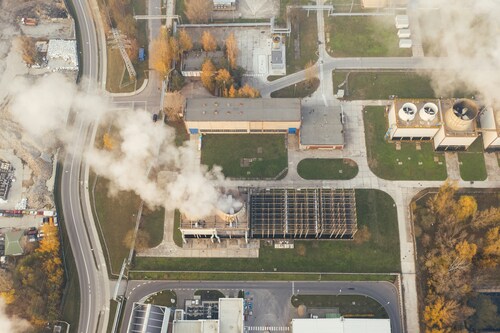Key Takeaways
- RAID technology is essential for data storage reliability and performance.
- Different RAID configurations serve various needs and use cases.
- Data redundancy and speed are at the core of RAID’s benefit to users.
- Understanding the pros and cons of each RAID level can optimize system performance.
What is RAID?
RAID, or Redundant Array of Independent Disks, has transformed data storage using multiple hard drives to maximize capacity and enhance security. Implementing RAID improves storage performance and reliability, establishing a solid digital infrastructure. RAID 10 stands out by combining the benefits of RAID 1’s mirroring and RAID 0’s striping, making it an excellent option for balancing performance and redundancy. It is ideal for high-availability environments, such as database servers and critical applications, as it allows quick data access while protecting against disk failures. However, due to its mirroring, RAID 10 requires double the storage capacity, leading to higher hardware costs.
Benefits of RAID Technology
Incorporating RAID technology into data management processes produces several key advantages beyond traditional storage capabilities. At the forefront is improved data redundancy. In a RAID array, data is stored across multiple disks, ensuring that even if a single disk fails, the data remains accessible. This feature is crucial in sectors where data integrity is vital, such as medical fields handling patient records or financial institutions tracking sensitive transactions. Additionally, RAID configurations are designed to accelerate data retrieval processes, which is particularly beneficial in high-performance environments where speed is a necessity rather than a luxury. For instance, video production companies and data-heavy analytical platforms can seamlessly handle large files and complex operations without bottlenecks.
Types of RAID Configurations
The diversity of RAID configurations allows businesses to select solutions that best fit their specific data management requirements. Here are some prevalent RAID setups:
- RAID 0: This setup focuses on performance enhancement by dividing data into blocks and distributing it across multiple disks. While its speed is beneficial for applications that require fast data processing, it offers no data redundancy, exposing it to greater risk in the event of a disk failure.
- RAID 1: Known for mirroring data across multiple disks, RAID 1 ensures absolute data security through redundancy, albeit at reduced storage capacity efficiency. This setup is favored in settings demanding high data availability and reliability, such as critical data archives or databases supporting crucial applications.
- RAID 5: With a blend of performance and redundancy, RAID 5 employs striping and parity data, allowing it to balance costs and storage efficiency while enabling data recovery from any single disk failure. It is often the configuration of choice for businesses needing a middle ground between expense, performance, and data safety.
- RAID 10: A harmonious blend of RAID 1 and RAID 0, RAID 10 caters to environments requiring quick data access and high reliability. This configuration is well-suited for mission-critical applications, supporting organizations where data agility and security cannot be compromised.
Choosing the Right RAID Level
Selecting the appropriate RAID level necessitates understanding several critical factors, including your data’s sensitivity, operational needs, and potential risks of data loss. If the primary concern is data safety, RAID 1’s duplication mechanism is a formidable option, providing peace of mind through robust redundancy. However, in scenarios where superior data processing speed is imperative, such as web servers conducting countless transactions or dynamic databases, RAID 10 or RAID 5 can offer the optimal compromise of speed and redundancy. The decision process involves:
- Meticulous evaluation.
- Aligning storage capabilities with organizational objectives and budgetary constraints.
- Ensuring a tailored solution that addresses specific needs.
Real-Life Applications of RAID
RAID technology proves to be indispensable across various industries due to its flexibility and capacity to support diverse data management needs. In the ever-evolving world of video editing, where manipulating extensive streams of high-resolution content is standard, RAID systems can supply the bandwidth and speed essential for handling such demanding workloads without sacrificing quality or efficiency. Cloud service providers rely fundamentally on RAID to ensure data availability despite hardware issues, enhancing service reliability. In scientific research, where managing substantial datasets efficiently is crucial, RAID enables rapid data access and maintains data integrity across extensive computing networks, contributing to more effective and streamlined operations.
RAID and Modern Storage Solutions
The integration of RAID technology into modern storage strategies underscores its enduring relevance and adaptability to advancements in storage media. With the advent of solid-state drives (SSDs), which offer unprecedented speeds and durability, RAID systems are ideally suited to complement these benefits by enhancing data redundancy and scalability. Organizations that embrace hybrid storage models, combining traditional hard drives with SSDs to achieve a holistic performance spectrum, frequently depend on RAID to dynamically manage data while aligning with modern demands. Consequently, RAID surpasses its initial role as mere legacy technology and emerges as a powerful, dynamic solution crucial for navigating the multifaceted challenges of contemporary data management.
Conclusion
RAID technology has revolutionized data management by offering enhanced performance, redundancy, and flexibility. Its wide range of configurations allows businesses to tailor their storage systems to meet specific needs, ensuring data reliability and speed across various applications. Whether in industries handling large datasets, such as video production or scientific research, or in environments where data security is critical, RAID delivers a robust solution that balances efficiency with protection. As storage technologies evolve, RAID remains a cornerstone in managing data effectively, positioning organizations for success in an increasingly data-driven world.




